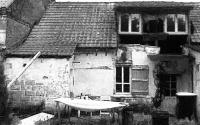Gideon Levy It sometimes seems the Gaza Strip has become the central shooting range of the Israel Defense Forces, the IDF's firing zone and training field. The weapons in use there are of dubious legality, the rules of engagement lack the element of restraint, and punitive measures that Israel would not conceive of inflicting in the West Bank are par for the course, in a region that produces far less terrorism than the West Bank. The operation last Wednesday, in the Sajiyeh quarter of Gaza City, in which 15 Palestinians were killed - including at least seven civilians - was the latest illustration, for the time being, of what Israel allows itself to do in Gaza. Fifteen dead for the sake of liquidating one Hamas man who wasn't very senior in the organization is an intolerable price. In Gaza, though, it has become routine: Once every week or two, the IDF moves in, kills, demolishes and pulls out, and no one knows exactly what it was all in aid of. Why do wanted individuals have to be liquidated now in Gaza altogether? Is it only to bring about more revenge terrorism?
The fact that not one terrorist attack against Israel has originated from the Gaza Strip, because of the fence there, only heightens these questions. One begins to suspect that the IDF is behaving like this in Gaza simply because it can do whatever it fancies there.
The Gaza Strip and the West Bank have always been differentiated in the Israeli consciousness. Whereas Ramallah and Bethlehem are considered cities inhabited by people, Gaza has always been portrayed as a "nest of terrorists." The fact that nearly 1.5 million people live there, among them farmers and intellectuals, merchants and craftsmen, religious and secular people - just like anywhere else - has been deliberately distorted here. Try to tell an Israeli that the beaches of the Gaza Strip are among the most beautiful in the Middle East and that the majority of the Gazans are cordial, especially warm people. Who will believe that? The demonization to which Gaza has been subjected, going back to the period before the occupation, has made it possible to behave differently there. Just as in the Israeli-occupied areas of Lebanon, which were remote and where almost everything was allowed, the occupation of Gaza, too, has always been marked by a sense of anarchy, dating back to the operations carried out there by Ariel Sharon and Meir Dagan (the current head of the Mossad) in the 1970s.
According to the Palestinian Human Rights Monitoring Group, there were five liquidations in the Gaza Strip in the past four months, as compared with only one in the West Bank. Why this ratio? Is it because the Gazans are more dangerous, or because more is allowed in Gaza?
The streets of Rafah resemble the set of a violent war movie. It's the Grozny of Gaza. To date, Israel has demolished hundreds of homes, including 40 in one day two weeks ago. The declared pretext - the arms-smuggling tunnels from Sinai - can't justify destruction on this scale. The IDF would never dare carry out demolitions of this scope in the West Bank. Suffice it to recall how Jenin became a worldwide symbol two years ago, in Operation Defensive Shield. In Rafah the suffering is greater than in Jenin, but no one takes an interest. There are hardly any foreign correspondents there, and of course no Israeli journalists. It's not by chance that peace activists Rachel Corrie and Tom Hurndall and the cameraman James Miller were killed there.
It's there that Israel renews its arsenal, too. The miniature black steel darts that scattered in every direction in September 2002, in the vineyard of the Hagin family, killing a mother, two sons and their cousin who were picking grapes, were semi-flechette shells - an illegal antipersonnel weapon generally fired from tanks. At least twice the IDF used the destructive shell, whose scattered darts I saw stuck in the sides of buildings a great distance from the place where the family members were killed. The IDF has not dared to use flechette shells in the West Bank. Similarly, the bombing of population centers from the air has been authorized on a number of occasions in Gaza. The air force, even under the command of the unrestrained Major General Dan Halutz, would not have the temerity to drop a half-ton bomb on a crowded residential area in Ramallah. But it's okay in Gaza, as in the liquidation of Hamas activist Saleh Shehadeh in July 2002 with a one-ton bomb.
The rules of engagement are different in Gaza, too. In November 2001 the deputy military judge advocate general admitted that there is a "vast difference" in the guidelines for opening fire between Central Command (the West Bank) and Southern Command (the Gaza Strip). Why should this be so? In the area of the isolated Gaza Strip settlement of Netzarim and along the fence around the Gaza Strip, the order is to shoot anything that moves, with no prior warning. The latest victims were a group of children who approached the fence in the A-Salem neighborhood of Rafah on the weekend. A 10-year-old boy was killed and three of his friends were wounded because the soldiers saw them as "suspicious figures."
Testimony of the "anything goes" atmosphere was given by a senior IDF officer back in 1998, during a tour of the Gaza Strip by representatives of human rights organizations. Asked whether Gaza Strip terrorists were more dangerous, he replied, "No, but here we can do more."






